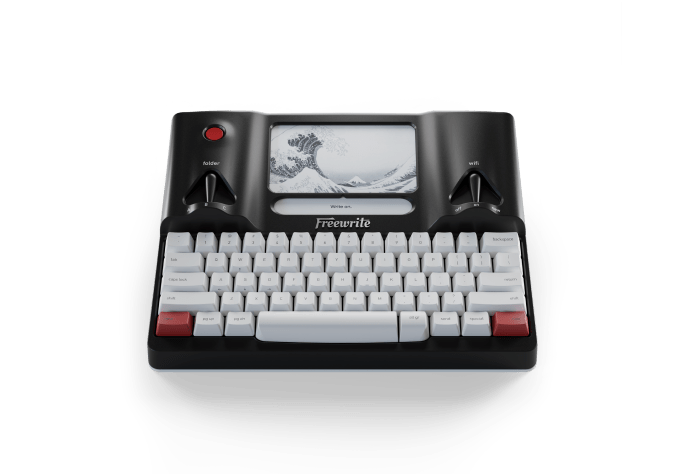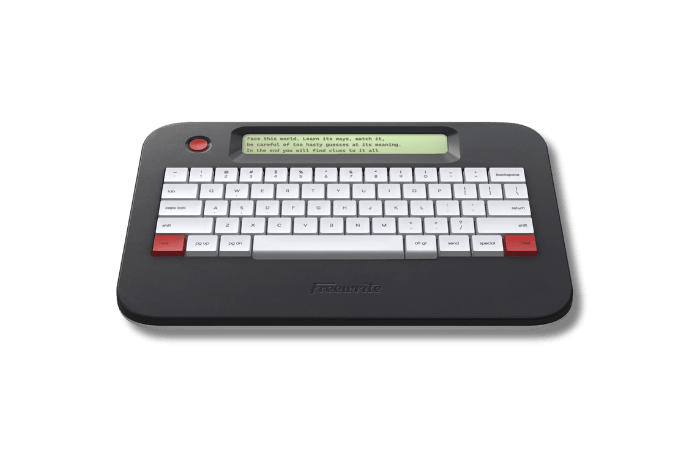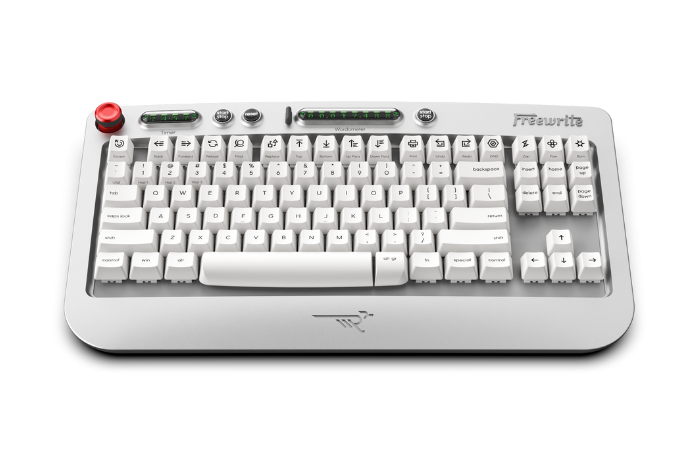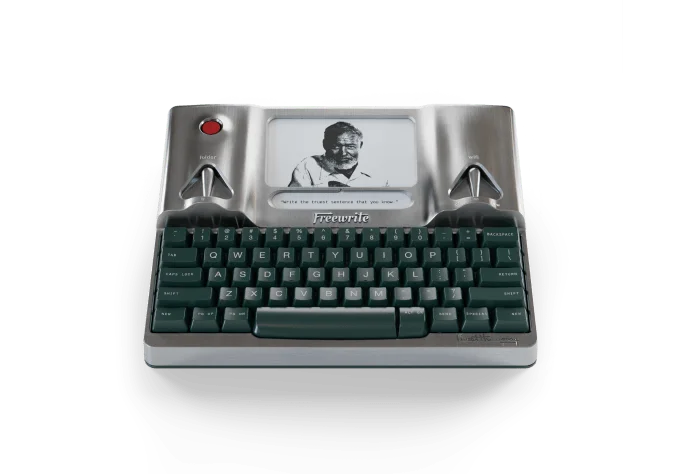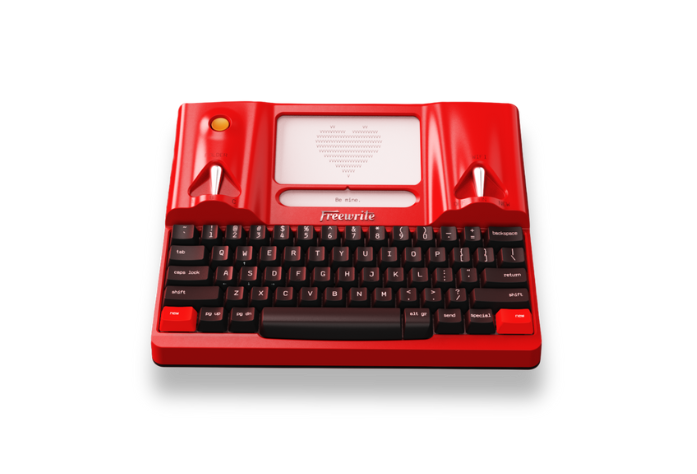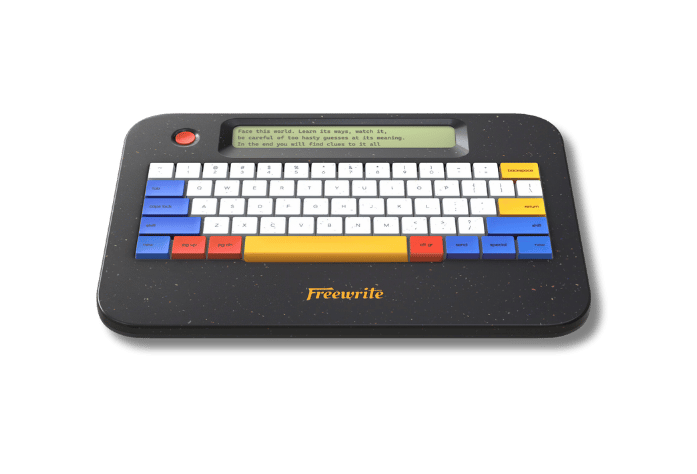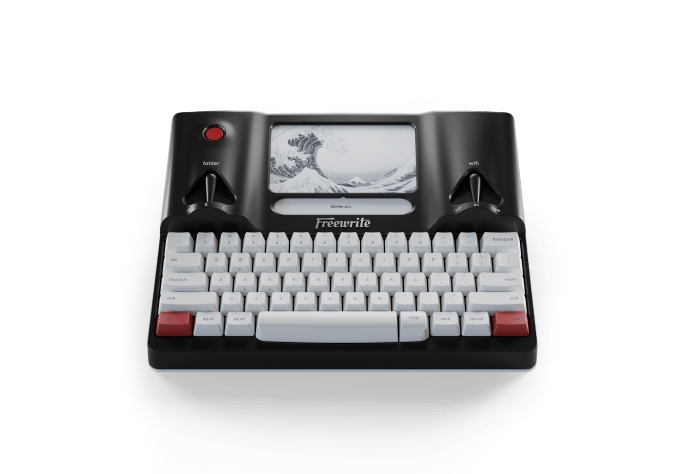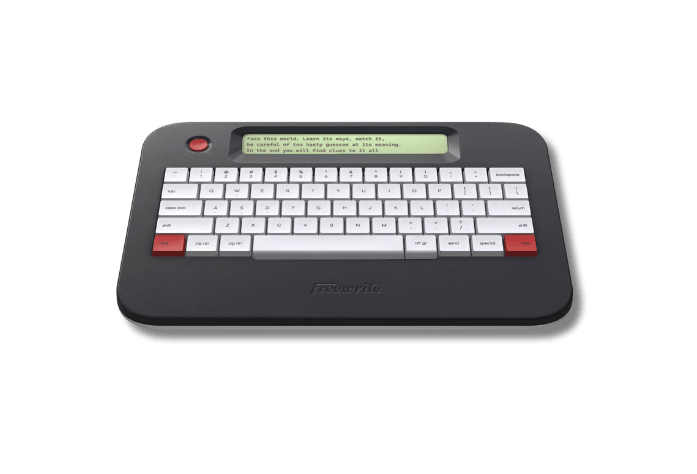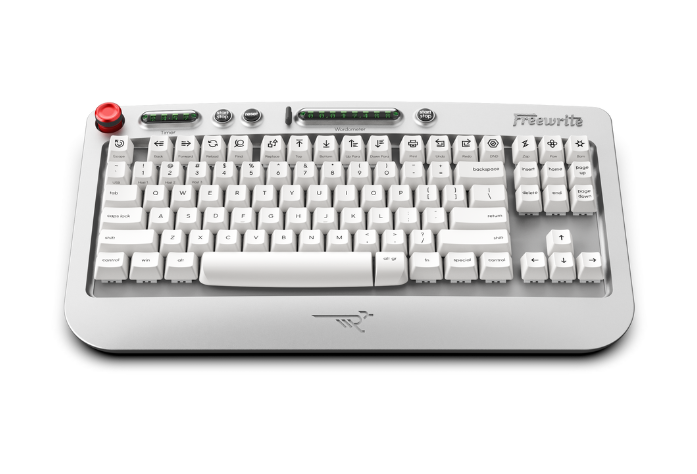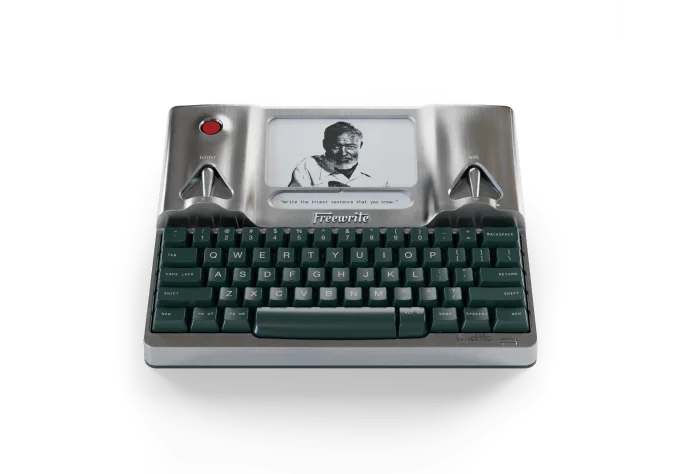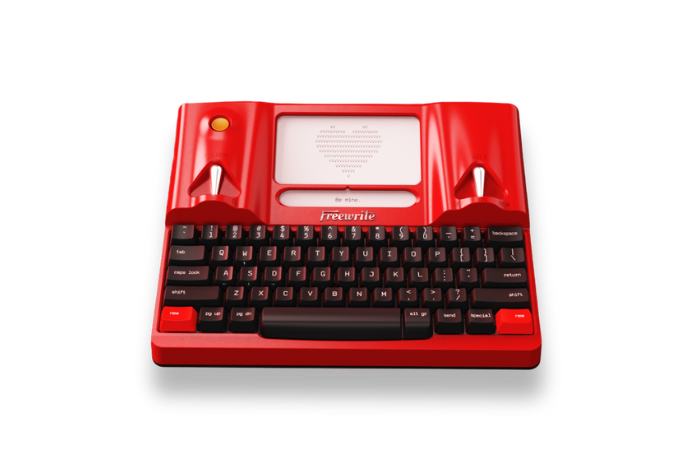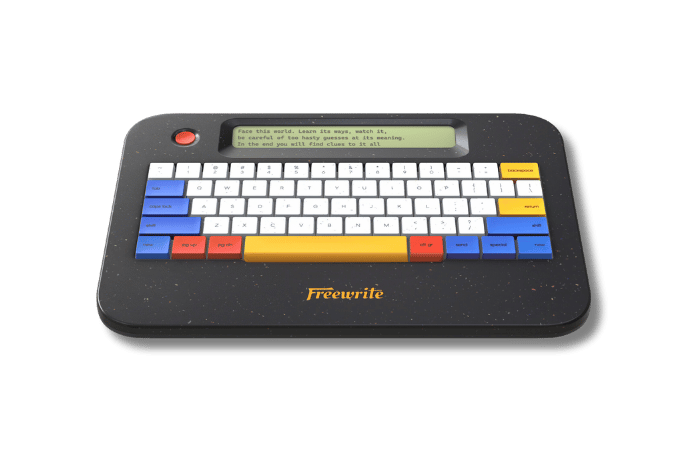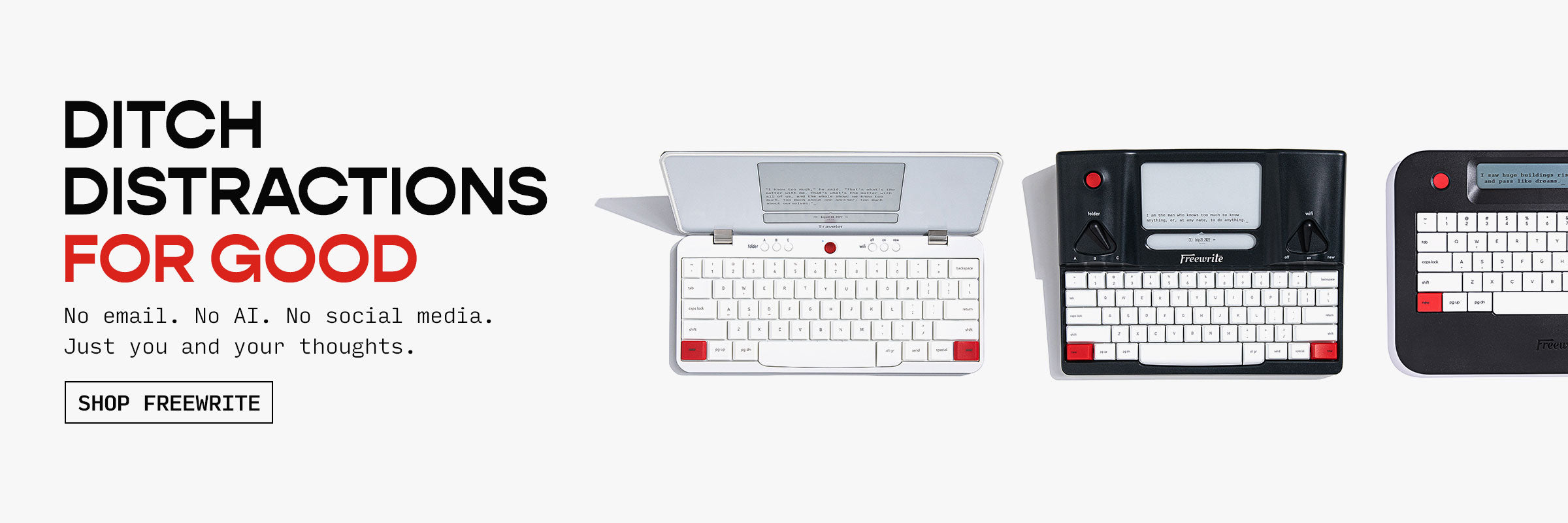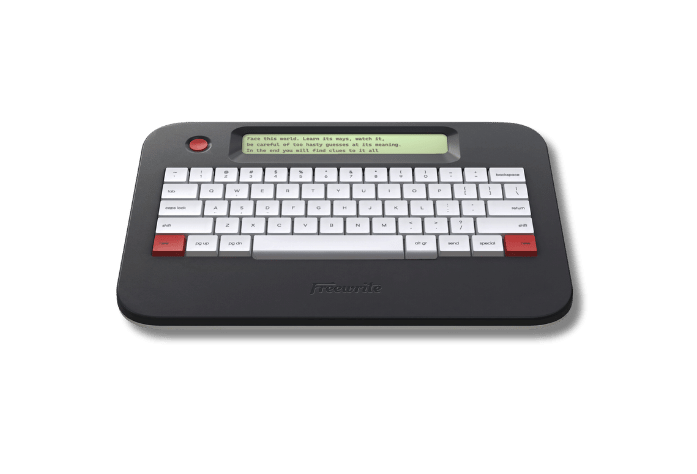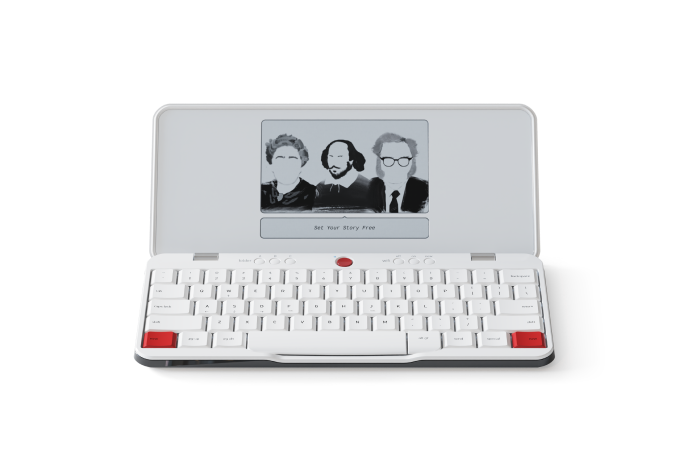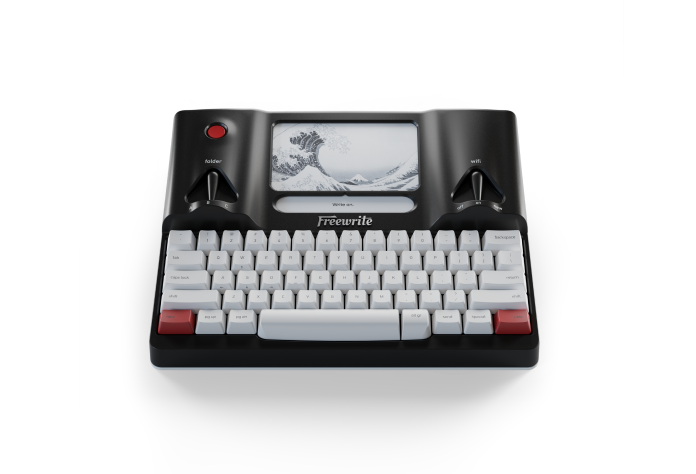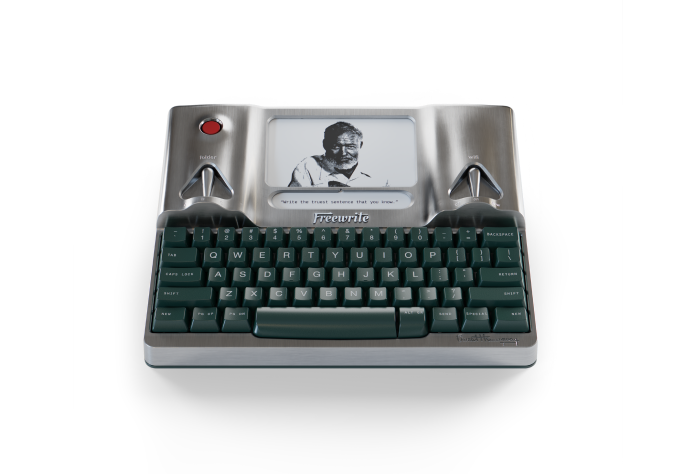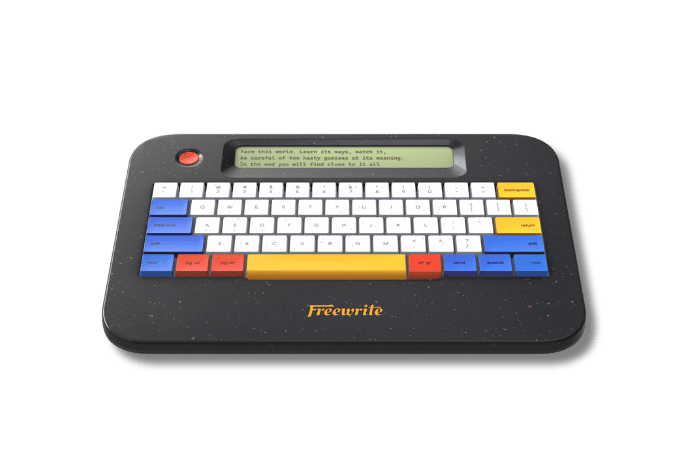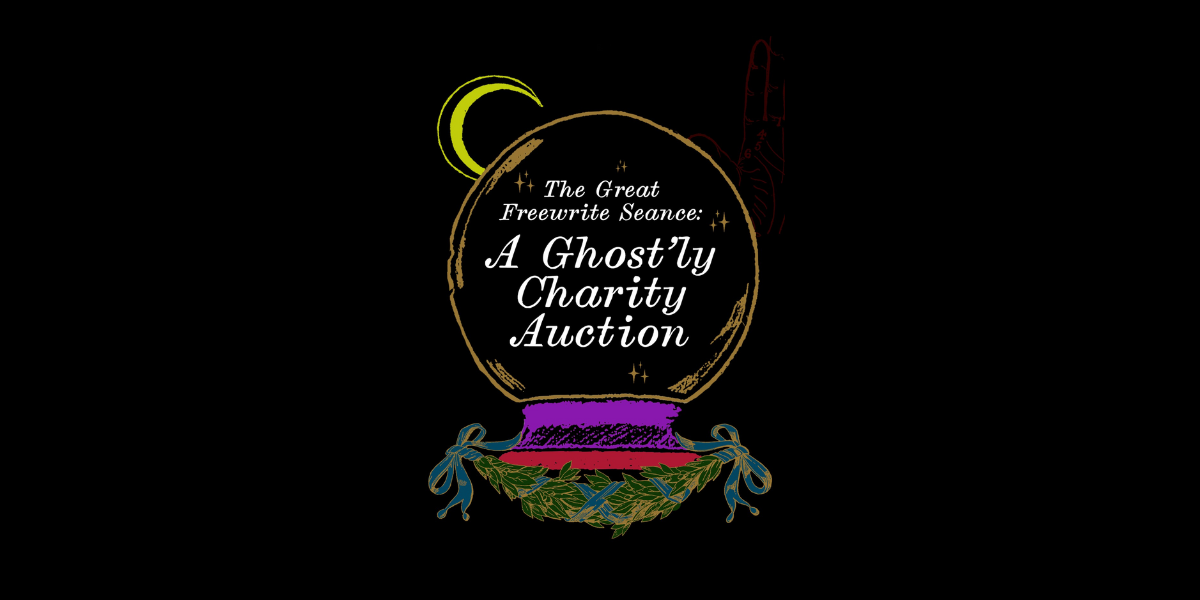We're just 10 weeks away from a major milestone: the 10th anniversary of Freewrite's launch on Kickstarter. On December 10, 2014, we introduced the Smart Typewriter, then known as "Hemingwrite," to the world.
How It Started
In September of 2014, co-founders Adam Leeb and Patrick Paul entered Hemingwrite into the “Insert Coin” hardware competition sponsored by Engadget. Described as a new digital consumer product for distraction-free writing composition, Hemingwrite aimed to deliver a singular focus on a productive writing experience. A decade later, that core mission remains unchanged.
Hemingwrite was one of 20 inventions competing that week, highlighting early-stage hardware startups from around the world that had not yet received funding or shipped to consumers.
"What the Kindle did for reading, we want to do for writing," said co-founder Patrick Paul at the time."We set out to deliver the same distraction-free writing experience of a typewriter with all of the added benefits of modern technology."
Co-founder Adam Leeb added, "We combined all of the best aspects of the typewriter, theMoleskine, and the computer to create a modern classic."
Althoughthe Hemingwrite concept didn’t win the competition, the initial coverage by Engadget led to another press hit and then another and quickly it became a viral sensation around the world. The project was covered in everything from The Wall Street Journal to The Atlantic. Over 125,000 people came to the simple wordpress website at hemingwrite.com and over 8,000 anxiously input their email asking for updates on the project.
Adam and Patrick knew they had something special on their hands but weren’t sure if anyone was willing to pay for this idea or if it was simply interesting. On December 10, 2014 the Kickstarter campaign was launched and immediately the pledge dollars started rolling in. Within 20 hours of launch, the campaign had raised over $200,000! And just like that, the Hemingwrite distraction-free writing tool concept became destined for reality.

How It’s Going
Since that initial launch, we have developed Freewrite into a family of distraction-free writing tools with three distinct models, Smart Typewriter, Traveler, and Alpha. Each has their distinct personality, but the core value of maximizing writer productivity runs throughout.
In 2020, The original Freewrite Smart Typewriter became part of the Science Museum, London’s permanent Printing & Writing Collection.
The name Hemingwrite was dropped in 2015 and then revived in 2021 with the Ernest Hemingway Special Edition Smart Typewriter in partnership with the Ernest Hemingway Estate.
We’ve created Sprinter for distraction-free writing in any browser and WTF where thousands of people every week receive a writing prompt and participate in Writing Time Friday.
The community's achievements over the past decade have been astounding:
- Freewrite users have created over 600,000 documents
- Collectively,users have written more than 605 million words (equivalent to over 6,000 novels!)
It’s hard to believe that it’s already been 10 years but it also feels like we are just getting started.
To kick things off:
One Year Warranty: Now Standard
We are extending our warranty that covers manufacturer’s defects to a full year on all Freewrite devices. This means you can enjoy your Freewrite with even greater peace of mind, knowing that we've got you covered for an entire year.
For more information, please visit our dedicated article on our new warranty policy here: Introducing Freewrite's New 1-Year Warranty: Our Commitment to You
Thank You
As we reflect on 10 years, we're filled with gratitude for the amazing writers who have made Freewrite an essential part of their process. Your passion has shaped our products and fueled our mission.
Here's to the next decade of your writing success!
- The Freewrite Team

